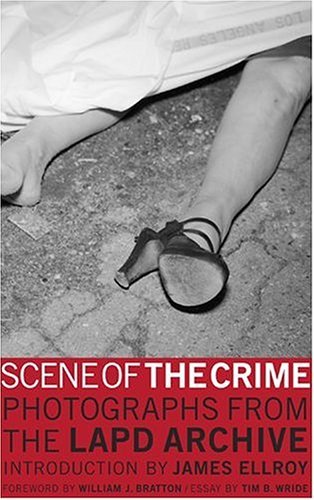
This fascinating book, Scene Of the Crime, features a collection of crime-scene photos from the files of the LAPD, from the 1920s through the early 1970s but concentrating on the 1940s and 50s. The photographs are both disturbing, sometimes very disturbing, and beautiful. No longer timely as records of current events, they have become instead extraordinary glimpses into vanished worlds. They document mostly ordinary places made extraordinary by death or violent accidents. They echo the process by which these deaths and these accidents act as a kind of camera shutter, focusing our attention on a precise moment in time, a precise locale.
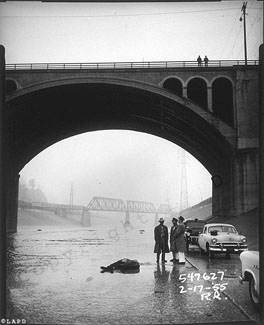
Made for purely practical, forensic purposes, documenting scenes of great dramatic interest, they have no need to be dramatic themselves. Even when they depict empty rooms, from which a murder victim has been removed, their intention to record as much of the room as possible, exactly as it is, lends them a spooky kind of power. One is bound to ask, “Why am I being asked to look at this — what secrets lie hidden here?”
These are exactly the questions one asks when looking at the great photographs of Atget and Evans and Eggleston, which all have a forensic quality — they don’t interpret, they don’t intervene between the mystery of visual fact and the awe of the spectator. They offer evidence, out of which we must build our own theory of the case in question.
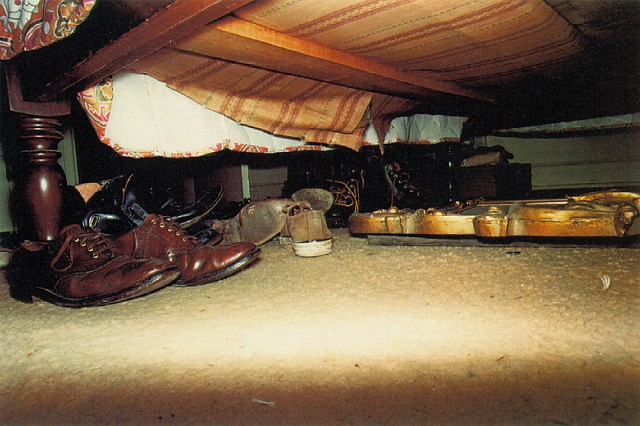 © William Eggleston
© William Eggleston
There may be irony in these great reckonings in small rooms, but the police photographer and the greatest art photographers don’t need to point it out to us. Any such attitude, such interpretation, might prejudice our eye, dull our investigative senses.
Much as I love the whimsical ironies of Winogrand, the dark ironies of Arbus, it is the forensic integrity, the humility in the presence of mystery I sense in Atget, Evans and Eggleston that I think makes them the greater artists. There are images in Scene Of the Crime that could pass for images by Evans and by Eggleston (though perhaps not, for mostly technical reasons, by Atget.)
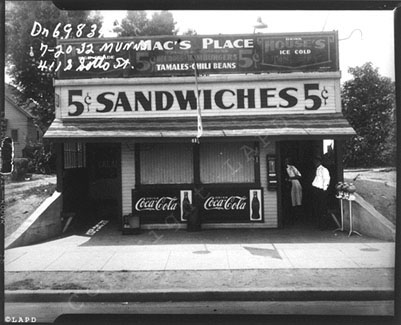
One comes to realize, paging through this book, that the presence of a corpse doesn’t make an ordinary place, an ordinary moment in time, extraordinary — it reveals them as extraordinary, by making us concentrate on them seriously and hard. And this is exactly what the greatest art photographers do as well. The fact that they can do it without the aid of a crime narrative is what makes them artists. Take away the corpse from the image below, or imagine the figure as a drunk passed out on the floor, and you will find yourself squarely in Eggleston territory.
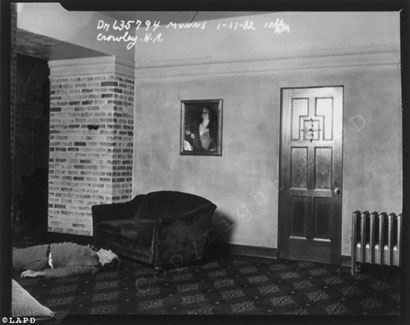
To see more images from the LAPD photo archives, go here.

you might also enjoy P**n with the figures removed . Yes, it is safe for work.
Cool.